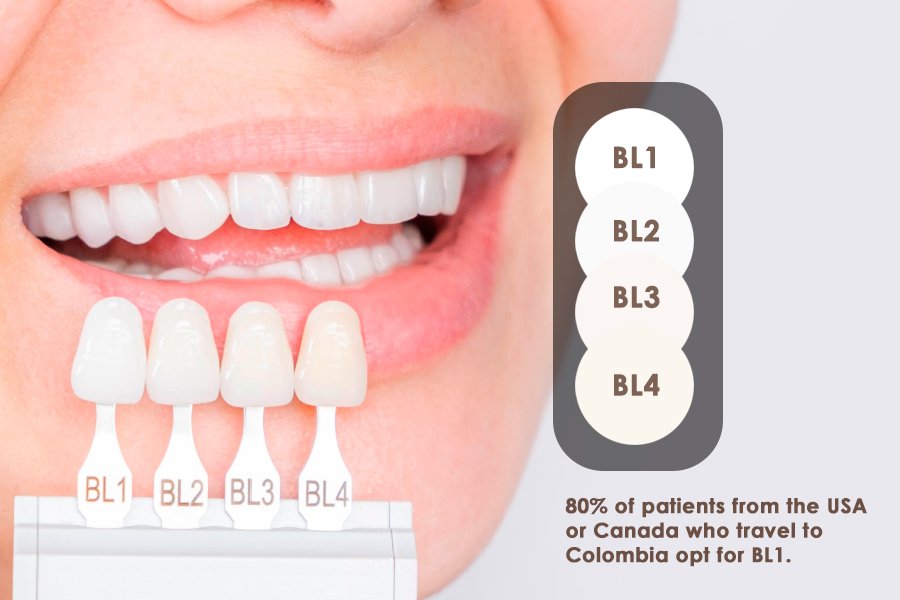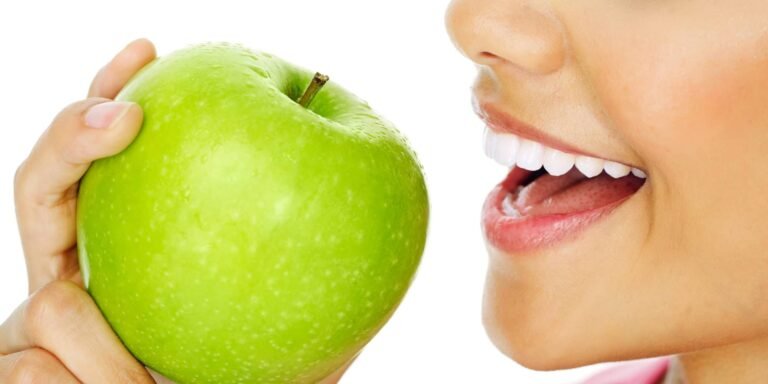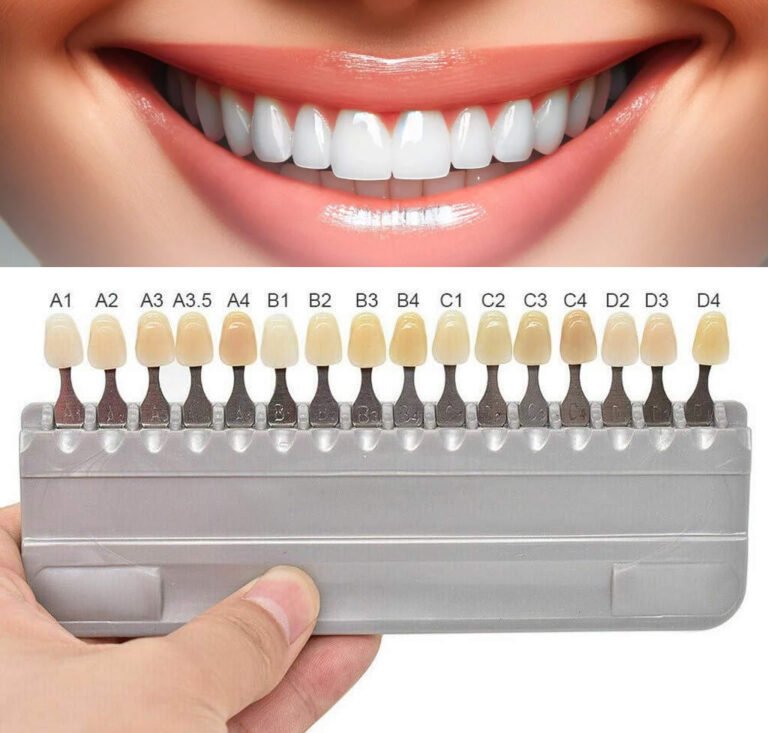We’ve included a photo of the Ivoclar shade guide for bleach teeth, alongside a classic shade guide for natural teeth. On the Choosing the right shade for your veneers is a critical decision that can greatly impact the final appearance of your smile. The shade you select will determine whether your new teeth look natural or make a bold, noticeable statement. Given the significant investment and the transformative effect veneers can have, it’s essential to choose a shade that aligns with your aesthetic goals and personal preferences. Here’s a guide to help you understand your options and make an informed decision.
We’ve included a photo of the Ivoclar shade guide for bleach teeth, alongside a classic shade guide for natural teeth. On the classic guide, A1 is usually the whitest natural tooth shade for most people, while B1 is typically seen in baby teeth rather than adult teeth.
- B1: If you prefer a natural look, selecting veneers beyond B1 on the natural shade guide may make it evident that you’ve had cosmetic work done to achieve such white teeth.
- BL4: BL4 is slightly whiter than BL1. If you want your smile to be immediately noticeable, BL4 can make your teeth stand out without being as intense as BL3, BL2, or BL1.
Ultimately, the choice depends on whether you want a strikingly white smile with a wow factor (BL4) or a softer white (B1). There’s no need to hurry the decision. Examine the shade guides with your dentist in different lighting conditions and have a thorough discussion about them. Learn more about veneers shades reading this article.
Additionally, you can review your dentist’s smile gallery of porcelain veneers. Look for patients with a similar skin tone and ask your dentist about the veneer shades used in the photos. This can help you make an informed decision about your veneer color.





